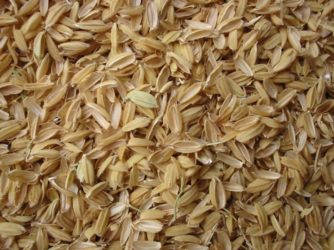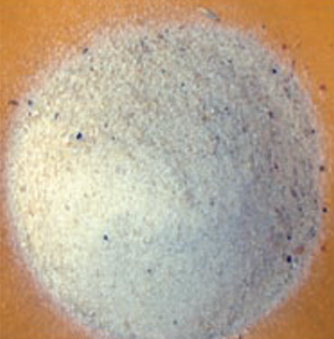 The bedding material on the floor of a poultry house serves to absorb moisture, provide insulation from cold floors and cushion birds’ breasts and paws. While the purpose of the material remains constant, the type of material used does not. While most of the US has relied on pine shavings for many years, alternative materials have gained ground, even more so recently due to rising material, transportation and labor costs as well as availability.
The bedding material on the floor of a poultry house serves to absorb moisture, provide insulation from cold floors and cushion birds’ breasts and paws. While the purpose of the material remains constant, the type of material used does not. While most of the US has relied on pine shavings for many years, alternative materials have gained ground, even more so recently due to rising material, transportation and labor costs as well as availability.
Need litter management expertise?
You've found it.
Poultry bedding material has a direct impact on the health and welfare of birds due to their direct contact with and possible consumption of the material. In addition, as the initial bedding becomes what is commonly referred to as “litter” with the addition of manure and feathers, it has a profound influence on the house environment due to the potential for the release of dust, moisture and gases such as ammonia into the air, and its impact on paw quality.
What are the properties of good poultry litter?
- Low initial moisture content
- Light in weight
- Medium particle size
- Highly absorbent
- Dries rapidly
- Soft and compressible
- Low thermal conductivity
- Inexpensive
- Absorb minimal atmospheric moisture
- Compatible with ultimate end use (fertilizer)

But What Do Various Bedding Materials Cost?
Cost is most often the first question asked when it comes to bedding materials, including the base material price, added transportation costs, and equipment and labor for spreading it. Quite often, the material price can be impacted by the amount of processing required to prepare it (ie. kiln drying), which also affects a material’s sustainability.
The price of the material itself is important, but other costs such as transportation, the equipment required to handle, spread and work the material in the house, and labor must also be taken into consideration. Cost will vary on location, so check with your local supplier to find yours.
Availability: Competition and Supply Chain
Availability of litter material is also a major factor and challenge, and will vary by region, time of the year, and competition for materials by other users. Many acceptable poultry house litter materials are also in demand by other industries such as manufacturing, construction, composting and landscaping.
Traditional Litter Materials
Wood shavings, sawdust, rice hulls, peanut hulls and sand have historically been the most commonly used litter materials in the poultry industry.

Kiln-dried wood shavings are the best and considered the gold standard in the poultry industry, but cost and availability are often challenges. Pine is the preferred species, but other softwoods such as poplar are acceptable. Hardwoods such as oak are generally not acceptable due to the potential for splinters, mold growth, and high tannin content if consumed by the birds.

Coarse sawdust from sawmills is an acceptable alternative to wood shavings provided the moisture content is not excessive. High moisture content sawdust will be prone to compaction and mold growth and will require drying before bird placement. Fine sawdust from secondary manufacturing is generally not recommended due to concerns of high dust and the potential for litter-eating by the birds.

Plant residues, such as rice and peanut hulls, have good absorbency and as by-products they aid in sustainability efforts, but there are mold and dust concerns with initial placement.

Sand has shown equivalent broiler performance to pine shavings, improved foot pad quality, and lower bacterial levels (Biligil, et al., 1999), but may present challenges such as higher dust levels, higher ammonia (Miles et al., 2011), and higher bulk density (weight) which adds to transportation costs and limits end use of litter to land application only. Sand may require slightly higher brooding temperatures than wood shavings due to lower litter surface temperatures, especially in cooler weather (Bowers et al., 2003).
Alternative Litter Materials
While some alternative litter materials have been shown under experimental conditions to work well as a sole litter material, very little information is available regarding use and performance under commercial conditions. Therefore, if these types of materials are to be used in a commercial setting, some initial experimentation is recommended.
Traditional Litter Materials
Alternative Litter Materials Include:
- Recycled and shredded wood products free from metal contaminates, paints, chemical treatments or other toxic contaminants.
- Plant materials such as wheat straw, switchgrass, miscanthus grass, sunflower hulls, and cotton gin trash.
- Peat moss, which has excellent moisture absorption capacity and a naturally low pH, but may be too costly.
- Commercial by-products and recycled materials are a great idea to support sustainability efforts, but there are a number of challenges. Recycled paper or cardboard products tend to result in excessive caking while recycled sheetrock if ground too fine can be too dusty.
Moisture Matters
As market conditions change, the choice of bedding material might change with it. What’s most important to remember is that moisture absorbency is perhaps the most important variable when selecting bedding material as this impacts its tendency to form caked litter, impact on foot pad quality, and ammonia formation and release. More cake tends to lead to a higher incidence of foot pad quality problems, which impacts animal welfare and profitability.
